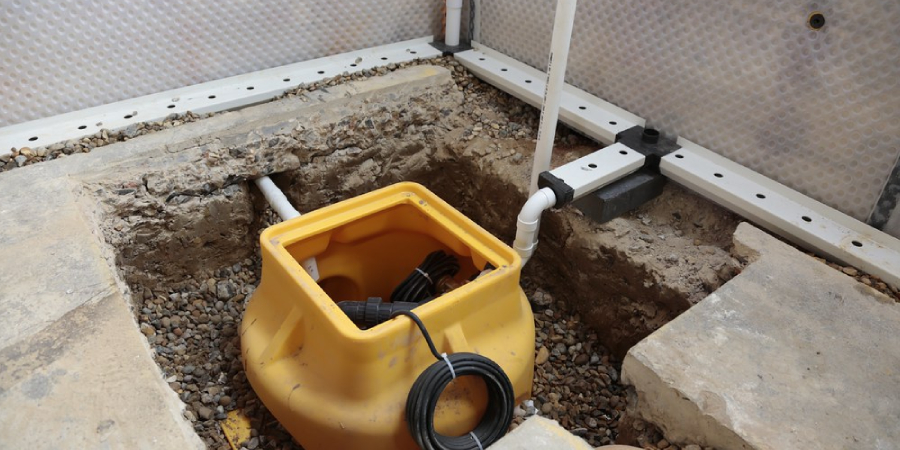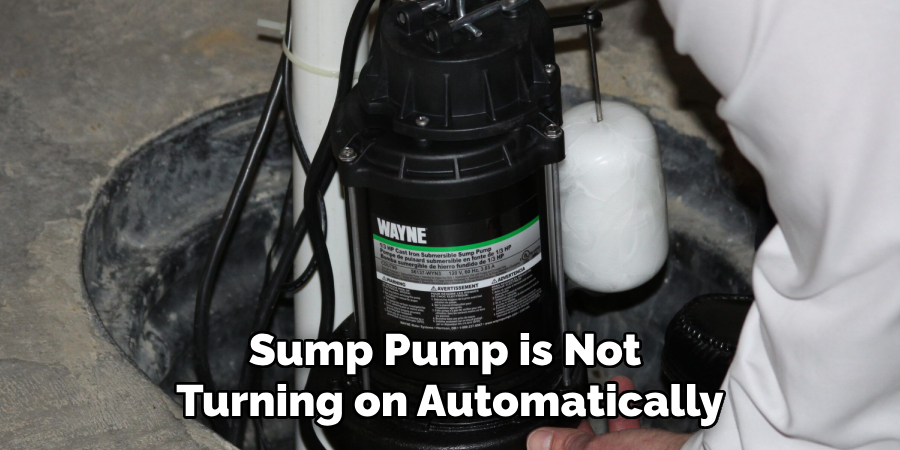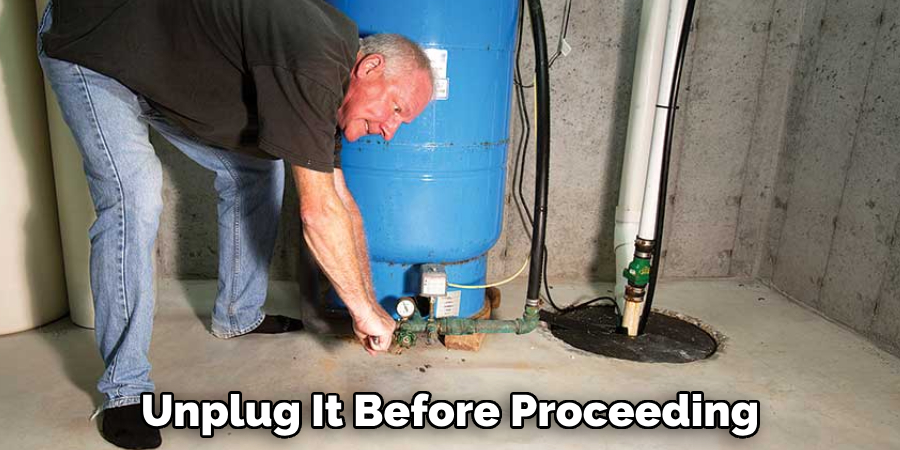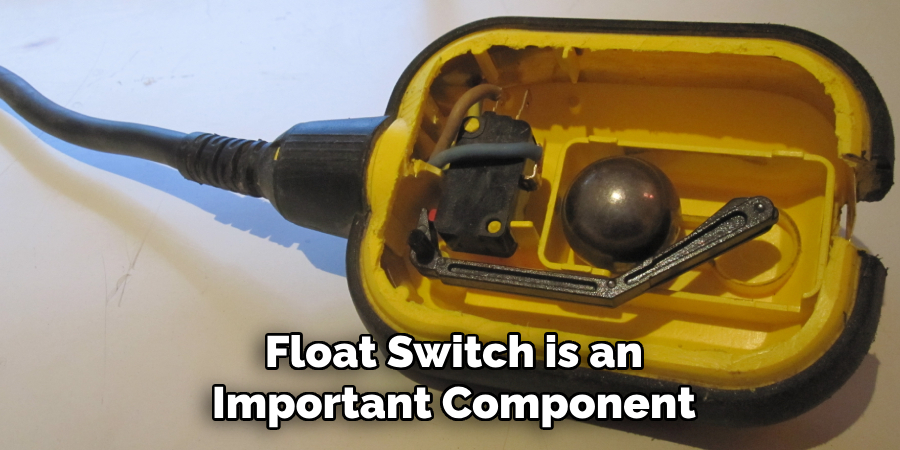Are you dealing with flooding around your property and need to know how to turn on sump pump manually? You’re not alone. As rainfall continues and floodwaters rise, more homeowners are being forced to adopt manual methods of preventing their basements from succumbing to potential water damage. Thankfully, switching on a sump pump manually is simple enough for anyone armed with the right information – and that’s what this blog post aims to provide!

One of the best ways to combat groundwater flooding in your home or business is by installing a sump pump. This device will actively draw any excess water away from these areas, keeping them dry and allowing you to go about your life without worrying about being impacted by unwanted moisture accumulations.
But what if your sump pump doesn’t turn on? If so, you can try manually turning it on as outlined in this blog post – we’ll provide step-by-step instructions so that regardless of your technical expertise level, you should be able to get it running again quickly and efficiently.
Why May You Want to Turn on Sump Pump Manually?
1 . To Test Your Sump Pump
If there hasn’t been a heavy rainstorm in your area for some time, you may want to test your sump pump manually to ensure it is working properly. This will give you peace of mind knowing that your basement or crawl space will be protected from flooding when the next storm hits.
2. To Prepare for Power Outages
Heavy rainstorms can often cause power outages, which can disable your sump pump even if it has automatic operation. By turning on your sump pump manually, you can ensure that your basement or crawl space is protected during a storm, regardless of power outages.
3. To Address Malfunctions
If you notice that your sump pump is not turning on automatically, it may have a malfunction that needs to be addressed. Turning it on manually can help determine the issue and allow for necessary repairs to be made before the next big storm.

4. To Avoid Water Damage
Sump pumps are an important line of defense against water damage in your home. By turning it on manually, you can prevent potential damage to your belongings and the structure of your house.
5. To Save Money on Repairs
Regularly testing and maintaining your sump pump can help prolong its lifespan and prevent costly repairs in the future. By turning it on manually, you can ensure that it is working properly and address any issues before they become more serious.
How to Turn on Sump Pump Manually in 5 Easy Steps
Turning on your sump pump manually is a simple process that can be done in just a few steps. Here’s how:
Step 1: Locate Your Sump Pump
Before you can turn on your sump pump, you need to locate it. Most sump pumps are located in the basement or crawl space of a home, usually near a wall. It may be covered by a plastic or metal lid. Also, make sure the pump is within reach and not obstructed by any objects.
Step 2: Unplug the Sump Pump
If your sump pump is currently plugged into an electrical outlet, unplug it before proceeding. This will ensure your safety while you work on turning on the pump manually. If your pump is hardwired, skip this step.

Step 3: Remove the Pump’s Lid
Once you have located and unplugged the sump pump, remove the lid by either lifting it off or unscrewing it depending on the type of lid. This will expose the interior of the pump and allow you to access its components.
Step 4: Locate the Float Switch
The float switch is a small, cylindrical device that detects the water level in your sump pump. It should be located near the top of the pump’s interior. The switch will have a ball-shaped float attached to it.
Step 5: Lift the Float Switch
To turn on your sump pump manually, simply lift the float switch until you hear a click. This will activate the pump and start pumping out any excess water in your sump pit. You can also use a long stick or tool to reach the switch if it’s not easily accessible.
Some Extra Tips to Turn on Sump Pump Manually
1 . Check the Power Source
Before turning on your sump pump manually, it’s important to check if the power source is working properly. Make sure that the outlet where your sump pump is plugged in is receiving electricity and there are no tripped circuit breakers or blown fuses. If you’re unsure about the power source, it’s best to call a professional electrician to avoid any accidents.
2 . Understand the Anatomy of Your Sump Pump
Different sump pumps may have different mechanisms for manual operation. It’s important to familiarize yourself with your specific model and understand how it works. This will make it easier for you to operate it manually in case of an emergency.
3 . Do Not Touch the Float Switch
The float switch is an important component of your sump pump and should not be tampered with. It automatically turns on the pump when the water level reaches a certain height and turns it off once the water is pumped out. If you manually turn on your sump pump, make sure to monitor the water level and turn it off once it’s below the recommended level.

4 . Have a Backup Power Source
In case of a power outage, it’s important to have a backup power source for your sump pump. This could be a generator or a battery backup system. Make sure to test the backup power source regularly and keep it in good working condition.
5 . Keep Your Sump Pump Clean
Regular maintenance of your sump pump can prolong its lifespan and ensure it works efficiently during emergencies. Make sure to clean the pump, check for any debris or clogs, and replace any worn-out parts. This will also help prevent any malfunctions when turning it on manually.
6 . Know When to Call a Professional
If you’re not comfortable operating your sump pump manually or are unsure about any of its components, it’s best to call a professional. They can help you understand the workings of your sump pump and provide proper guidance for manual operation. In case of any issues or malfunctions, it’s always better to seek professional help rather than risk damage to your pump.
Frequently Asked Questions
What Precautions Should I Take Before Turning On My Sump Pump Manually?
Before turning on your sump pump manually, there are a few precautions you should take to ensure safety and proper functioning. Make sure the power is turned off. This is the most important step before attempting to turn on your sump pump manually.
Ensure that the power is turned off at the main circuit breaker to avoid any electrical accidents. Additionally, you should also disconnect the battery backup if your sump pump has one. This will prevent any potential hazards while working on your sump pump manually.
Can I Turn on My Sump Pump Manually If There is No Power?
Yes, you can turn on your sump pump manually even if there is no power. Most sump pumps come equipped with a manual switch that allows you to turn it on manually even in the case of a power outage.
This feature can be very useful during severe storms or other emergencies when the power may be out for an extended period. However, it is important to note that manually turning on your sump pump should only be used as a temporary solution until the power is restored.
How Much Water Should Be in My Sump Pit Before Turning On the Pump?
It is recommended to have at least 2-3 inches of water in your sump pit before turning on the pump. This ensures that the pump has enough water to create a proper seal and prevent any air from entering the system, which can cause damage and decrease efficiency.

If you notice that there is less than 2 inches of water in your sump pit, it may be a sign that your pump is not working properly and needs to be inspected or repaired.
What Should I Do If My Sump Pump is Not Turning On?
If your sump pump is not turning on, there are a few potential reasons why. First, check that the power is turned on and connected properly. Next, make sure the float switch is functioning correctly and not obstructed or stuck.
You can also try manually lifting the float switch to see if that activates the pump. If none of these solutions work, it may be an issue with the motor or other internal components of the pump, and it may need to be replaced or repaired by a professional.
Conclusion
Knowing how to turn on sump pump manually is an important skill for every homeowner. It can help prevent potential flooding and damage to your basement or crawl space during power outages or pump malfunctions. With these extra tips, you can ensure the proper functioning of your sump pump and have peace of mind knowing your home is protected from water damage.
Remember to always prioritize safety and maintenance when it comes to operating your sump pump manually. So, follow these tips and be prepared for any emergency situations that may arise! Stay safe, stay

